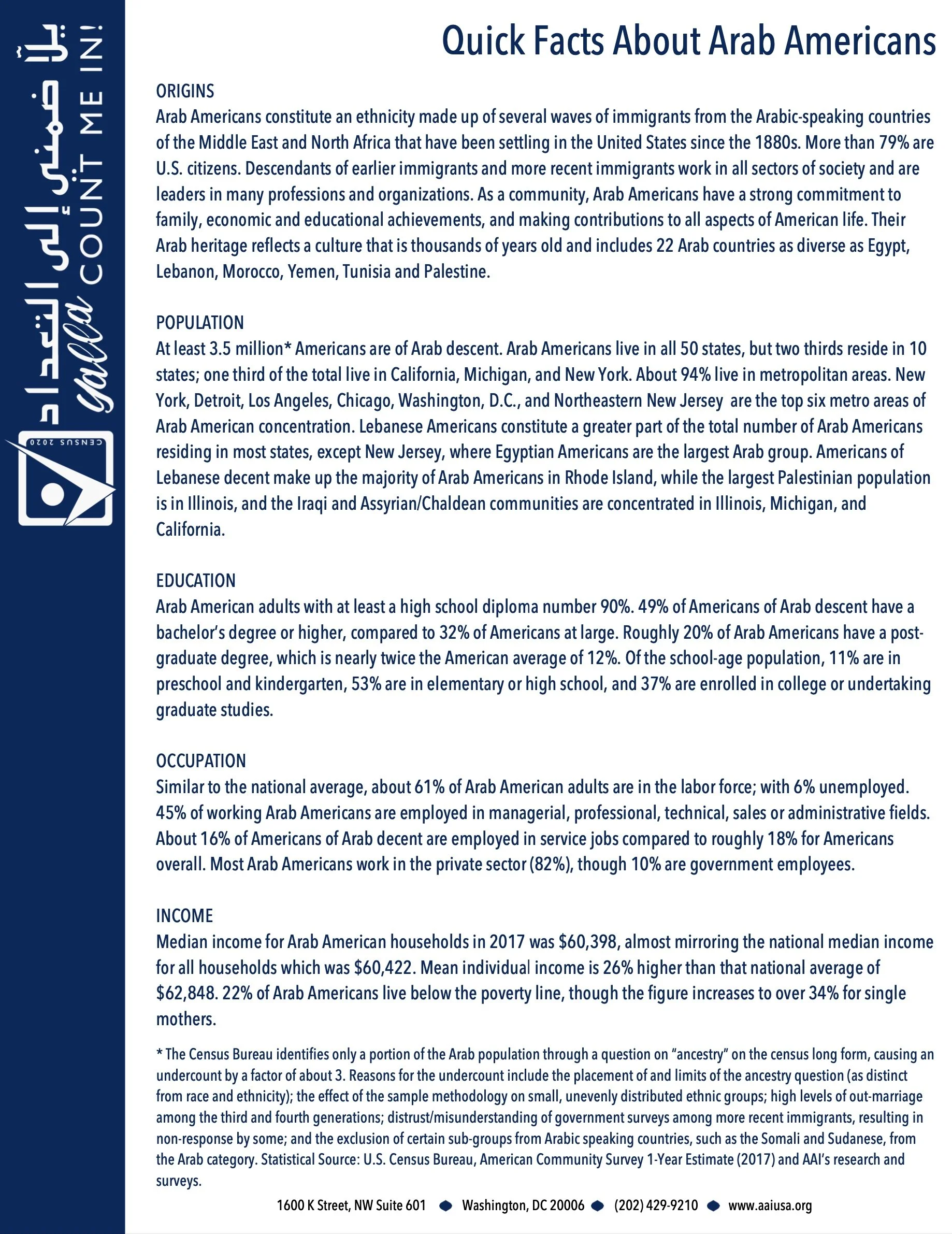AAI’s comment in response to the Federal Register Notice supports the revision of the race and ethnicity standards, including updating Directive 15 to include the addition of “Middle Eastern or North African (MENA)” as a new minimum reporting ethnic category, supporting a combined question format on race and ethnicity, and the mandatory collection of detailed race and ethnicity by default.
Read MoreThis draft community comment in support of the MENA category was submitted by hundreds of you during the Federal Register Notice open comment period regarding the Office of Management and Budget’s revision of the race and ethnicity standards.
Read MoreThe Middle Eastern or North African (MENA) checkbox would be a new minimum reporting ethnic category on the decennial census and other federal surveys. MENA populations, including Arab Americans, would get their own box for their ethnicity, while having the option to also check any other category, including another ethnic category or one of the racial categories.
Read MoreFrom the archive, a fact sheet from the first national Arab American get-out-the-count campaign. It was organized in the lead up to the 1990 Census: “Arab Americans are a growing ethnic constituency and contribute to every part of American society. The 1990 Census is our chance to get an accurate count of how many persons of Arabic-Speaking descent live in the United States and an understanding of their diversity.”
Read MoreWithout a MENA Category, the source for Arab American data has historically been the American Community Survey. While incomplete, we use 2017 ACS data and AAI research and surveys to produce this document to provide a snapshot of the origins, population, education, occupation, and income statistical estimates for Arab Americans.
Read MoreFrom the 2020 Census Get-Out-the-Count campaign, this fact sheet explains the difficulties in detecting disinformation. In the age of social media, there is a huge amount of information out there, and it can be hard to sort through it all. However, here are some generalizations about what disinformation looks like and some tools to let you dig deeper into disinformation online.
Read MoreFrom the 2020 Census Get-Out-the-Count campaign, this document explains the many ways the Census impacts all of us, especially as Arab Americans.
Read MoreFrom the 2020 Census Get-Out-the-Count campaign, this issue brief explains the importance of the census to our democracy and the recommendations we proposed for ensuring a fair and accurate count of Arab Americans in 2020.
Read More







